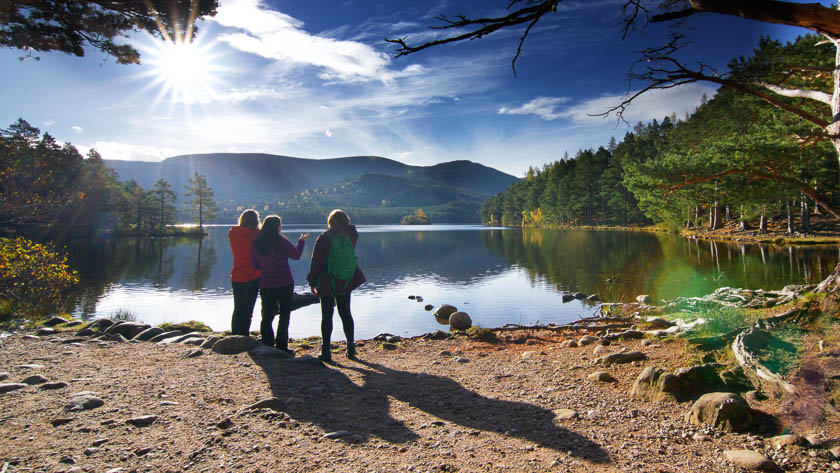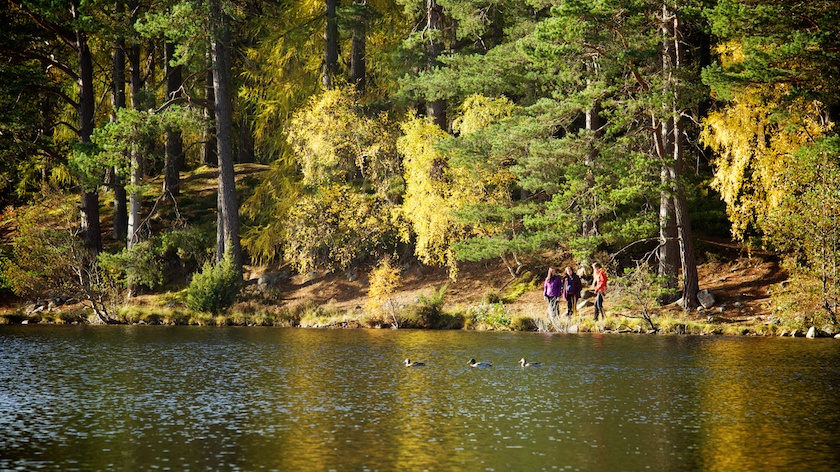By Meike Burgess, Content Editor
Published: Sep 10, 2020More by Meike
Articles by Year
- March 2024
- December 2023
- July 2023
- June 2023
- May 2023
- April 2023
- February 2023
- January 2023
- December 2022
- June 2022
- March 2022
- October 2020
- September 2020
- August 2020
- May 2020
- April 2020
- March 2020
- February 2020
- January 2020
- December 2019
- November 2019
- September 2019
- August 2019
- June 2019
- May 2019
- April 2019
- March 2019
- February 2019
- January 2019
- October 2018
- September 2018
- May 2018
- April 2018
- March 2018
- February 2018
- November 2017
- May 2017
- August 2016
- May 2016
- March 2016
- September 2015
- October 2014
Articles by Category
Deer Stalking in the Scottish Highlands
We collectively hold our breath as Peter moves off, soundless in the forest. Peter supplied us with a set of thermal binoculars and we took turns locating his target. Even with the binoculars, it was hard to find the roe deer we’ve been stalking. Through the lens, it’s a dark squiggly shape in a sea of grey trees. With the naked eye, there was no chance of spotting the deer; perched roughly 25 meters away on a nearby hill, perfectly camouflaged by the trees and shrubs.
Peter works his way through the undergrowth, crawling quietly to get into position. We hang back, trying to stay perfectly still and soundless. He told us at the start, “The deer can’t see you unless you move. They can smell you if you’re upwind and hear you as you approach.”
It was the second attempt of the morning and we were tensely awaiting what would happen. He’d taken to us what was surely one of the most beautiful spots in the Cairngorms, unknown to the public. It was a small clearing in the middle of thick pine, bathed in the dappled morning sun. Trying not to make a sound makes you acutely aware of all the surrounding forest noises. The gentle rustle of the leaves in the wind. Birds chirping cheerily. The trickling of the nearby stream. Then one loud bang. A quick check of the binoculars confirmed the shot, the dark squiggle hadn’t moved. Completely unaware of what was coming, it was killed instantly.
Humane and Safe Deer Stalking
Earlier as we stood on a blustery hill, having a much clearer shot, Peter uncocked his rifle and the young buck startled away at the noise. He explained to us that he could not get a clear shot to shoot that particular deer in a responsible way.
Above all, the deer culling process on the Rothiemurchus Estate is managed as humanely as possible for the deer, and with complete safety to the recreational users of the estate.
Peter would not take a shot of which he could not be certain it would kill the deer swiftly, and would also not take a shot without ensuring that the bullet would go no further than intended. A hill or embankment is required, so the bullet is caught safely in case it misses.

Deer Management in Scotland

It’s a fascinating yet controversial subject. Deer culling is an essential part of land management in Scotland, necessary to strike a careful balance between the environmental, social, and economic impacts of deer. They have both positive and negative effects in Scotland. Most notably, deer are culled for their overgrazing, especially in woodland areas. Fences are put up to protect vulnerable flora and saplings, but at times it’s not enough. Deer are also a nuisance to road traffic and can host Lyme Disease carrying ticks. However, the deer are also a big part of the Scottish economy. A 2013 report estimated that deer stalking brought £105 million to the Scottish economy. Furthermore, deer are also a tourist attraction, having been marketed as a Scottish icon for several years. Many visitors are keen to see deer in the wild. Furthermore, in terms of biodiversity, there is also an argument that some habitats benefit from deer grazing, and that without it certain areas would be too thick for some species to thrive.
The issue remains that Scotland has a massive deer population, well over a million. Contextualise this figure with Scotland’s human population of around 5.5 million. This abundance is due to several reasons. Here we have no natural predators, with both wolves and lynx having been long gone from the Scottish countryside. Furthermore, estate owners have been and still are reluctant to cull deer, with a good and varied stock being essential for hunting. Thus, the culling of deer on private and public managed land follows governmental guidance, intended to balance both sides of the argument.
The Forest to Fork Experience
The Rothiemurchus Estate has been very dynamic in its management for years, diversifying its offering to meet the changing demands of the land. Aside from the traditional estate activities of forestry and country sports, the estate offers various outdoor activities to tourists. This includes clay pigeon shooting, Land Rover tours, fishing, off-road segway, pony trekking, camping, caravanning, and more. Bearing the pros and cons in mind, Rothiemurchus also practises controlled deer culling both through profitable stalking and planned conservation.
On this ‘Forest to Fork’ experience, clients accompany the local stalker Peter Ferguson. Peter’s been the head stalker and conservation manager on the estate for many years. Peter comes from a local family and knows the ancient forest and nearby glens like the back of his hand. He’ll regale clients with stories of the local characters, the history of the estate, and also tell his guests all about the local flora and fauna.
Aimed to be an accessible stalking experience, Peter whisks you away in his Landy (4×4). It smells exactly as you imagine a stalker’s Land Rover to smell. Of leather, engine oil, and animal musk. There is also a hint of damp coat, the odour of various wet hunting groups sheltering from the rain has embedded in the fabric of the seats. The day is completely tailored to your preference. Peter will either take you out early in the morning or at dusk. This is when the deer are lower down in the hills and at their most active. The weather is the main decider on where you’ll go on the estate. A clearer day allows for a further trek into the various glens. Poorer weather will take you to the lower down woodland options. Either way, there will be an option suitable for the group to get a real taste for stalking.
As the name suggests the experience with Peter is aimed to deliver the whole process; from the stalking in the forest right to the finished product on the plate. The level of involvement is entirely up to your client’s tastes. Before or after the guided stalk, Peter will take his guests to experience shooting a rifle in a controlled environment. Taking turns everyone will get a shot at taking aim at the target and releasing the trigger under Peter’s close guidance. For some, this may be their first and only time shooting a firearm.
An optional activity includes a visit to the venison larder. Any deer shot on the estate is recovered to the larder. It’s here that the initial processing begins and the meat is matured for several days before butchery. Next up is a meet and greet with the estate’s in-house butcher Brian. To demonstrate the butchery, Brian will use a deer shot earlier which has been sufficiently matured to show how to extract and handle the best cuts from the carcass. Like the rest of the experience, this can be as interactive as desired. Guests can learn how to do a bit of butchery themselves, or watch the master at work.
Further optional add-ons include a venison tasting, whisky pairing, and cookery school. Once matured and butchered, there is the option to purchase the venison shot on the day of the experience. Eating it on the final night would be a wonderful and unique way to mark the end of a memorable holiday in Scotland.
The Details
Pricing from: £480 for 4 people
Duration: 1/2 day – 2 days
Seasonality: Year-round








